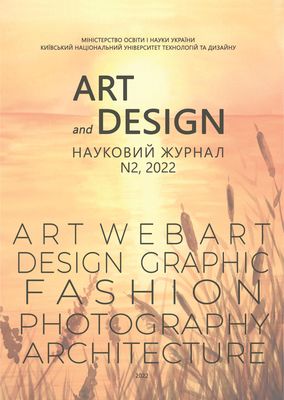METHODS OF FORMING POSTMODERNIST IRONY IN THE WORKS OF UKRAINIAN LAND ART
DOI:
https://doi.org/10.30857/2617-0272.2022.2.12Abstract
The purpose: on the example of works created at the international land art symposium «Border Space» in the village of Mogrytsia of the Sumy region, to
analyze the works where irony is the main feature of the work and to identify the methods of its formation. Methodology. General scientific and special research methods were used, in particular formal, semantic and figurative and stylistic analysis. Results. It was established that ironic works of land art have the following features: multi-meaning, multi-contextuality, the presence of symbols, intertextuality, irony and the principle of play. This is a lot of what postmodernism entails. Ironic works of land art are presented in such a form of сontemporary art as performance, object, performance+object. Two types of relationship are distinguished between an ironic work of land art and its name: the name expresses what the artist created; the title conveys something different from what is demonstrated in the work. Applying the methods of creating irony in literary texts to ironic works of land art, we came to the following conclusion: repetition, paradox, absurdity, metaphor, epithets, and hyperbole are artistic techniques of irony formation in works of Ukrainian land art. Of these, one or more methods are used in one work of land art. Contrast (semantic and visual) is highlighted as a common technique found in all ironic works of land art. Semantic contrast is manifested in: 1. a paradoxical situation; 2. discrepancy between the declared and the result; 3. ambivalence.
Visual contrast as a way of expressiveness in visual arts is carried out with the help of differences in form, tone, color, texture and size. In land art, visual contrast is also realized as a hyperbolization of the object. The contrast between artificial and natural is added to the visual contrast. Scientific novelty. For the first time, the works of Ukrainian land art where irony is a basic intellectual emotion were analyzed and the methods of its formation were highlighted.
Practical significance. Given the dual essence of land art, the practical significance of the study is that the indicated methods of forming ironic works
of land art reveal ways of creating a modern intellectual emotional environment with irony, as an object of design and (or) a work of сontemporary
art.

